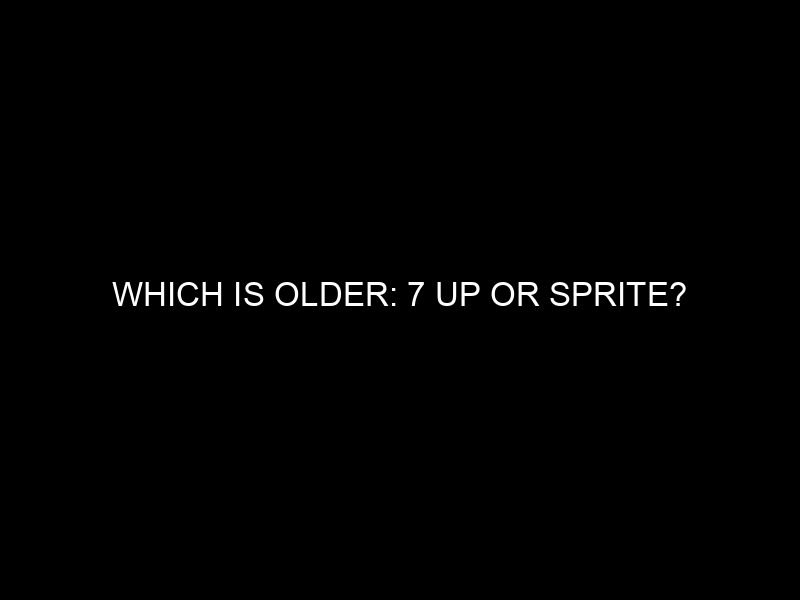The soft drink industry, marked by iconic brands, has seen a fascinating evolution over the decades. Among the giants in this industry are two popular lemon-lime flavored sodas, 7 Up and Sprite. These beverages have not only quenched the thirst of millions worldwide but have also become a part of popular culture. In this article, we will explore which of these two beverages, 7 Up or Sprite, is older, delving into their rich histories and the evolution they have undergone. As a professional with a background in Nigeria’s business sector and an understanding of 7 Up’s market dynamics, I aim to provide an insightful, expert view on this topic.
Detailed Insights: The Origin and Evolution of 7 Up and Sprite
The Birth of 7 Up
7 Up, originally named “Bib-Label Lithiated Lemon-Lime Soda,” was created in 1929 by Charles Leiper Grigg. This was just two weeks before the infamous Wall Street Crash, marking the beginning of the Great Depression. Despite the challenging economic environment, 7 Up found its footing and became widely popular, particularly in the United States.
Sprite’s Entry into the Market
In contrast, Sprite was introduced by The Coca-Cola Company in 1961 as a direct competitor to 7 Up. Its inception was a strategic move to capture a share of the growing market for lemon-lime flavored sodas. Sprite quickly became a global sensation, expanding its reach to multiple countries, including Nigeria.
Market Dynamics and Evolution
7 Up’s Marketing and Brand Evolution
7 Up’s marketing strategies have played a significant role in its growth and popularity. From its early slogan, “You Like It, It Likes You,” to the famous “Uncola” campaign in the 1970s, 7 Up has consistently positioned itself as a unique and refreshing alternative to colas.
Sprite’s Brand Positioning and Expansion
Similarly, Sprite has made a significant impact with its marketing, often targeting a younger, more urban demographic. Its association with hip-hop culture and sports, especially basketball, has helped Sprite maintain a fresh and modern image.
Comparative Analysis: 7 Up vs. Sprite
When comparing the two, it’s evident that 7 Up, having been created in 1929, is older than Sprite, which entered the market in 1961. However, both brands have shown remarkable adaptability and resilience, evolving with consumer tastes and market trends.
FAQs
Q1: What makes 7 Up different from Sprite in terms of ingredients?
A1: 7 Up originally contained lithium citrate, a mood-stabilizing drug, until 1950. Nowadays, both 7 Up and Sprite mainly consist of carbonated water, high fructose corn syrup, and natural flavors, but their formulas differ slightly, giving each a distinct taste.
Q2: Has Sprite always been a part of The Coca-Cola Company?
A2: Yes, Sprite was developed and introduced by The Coca-Cola Company as an answer to the growing popularity of 7 Up.
Q3: What are some of the key markets for 7 Up and Sprite?
A3: Both 7 Up and Sprite enjoy global popularity, with key markets in North America, Europe, Asia, and Africa, including significant market shares in countries like Nigeria.
Q4: How have 7 Up and Sprite adapted to health trends?
A4: Both brands have introduced lower sugar and zero-calorie versions to cater to health-conscious consumers, reflecting a shift in consumer preferences towards healthier options.
Q5: Can you mention some notable advertising campaigns for 7 Up and Sprite?
A5: 7 Up’s “Uncola” campaign and Sprite’s “Obey Your Thirst” campaign are among the most notable,
reflecting their unique branding strategies. 7 Up’s campaign emphasized its difference from colas, while Sprite’s campaign focused on youth culture and individuality.
Conclusion: The Legacy of 7 Up and Sprite
In conclusion, while 7 Up, born in 1929, is the older of the two, both it and Sprite, introduced in 1961, have carved their niches in the soft drink industry. Their histories reflect not only the evolution of branding and marketing strategies but also changing consumer preferences and global market dynamics. Both brands have shown an impressive ability to adapt and thrive, making them enduring favorites in the beverage world.

Leave a Reply